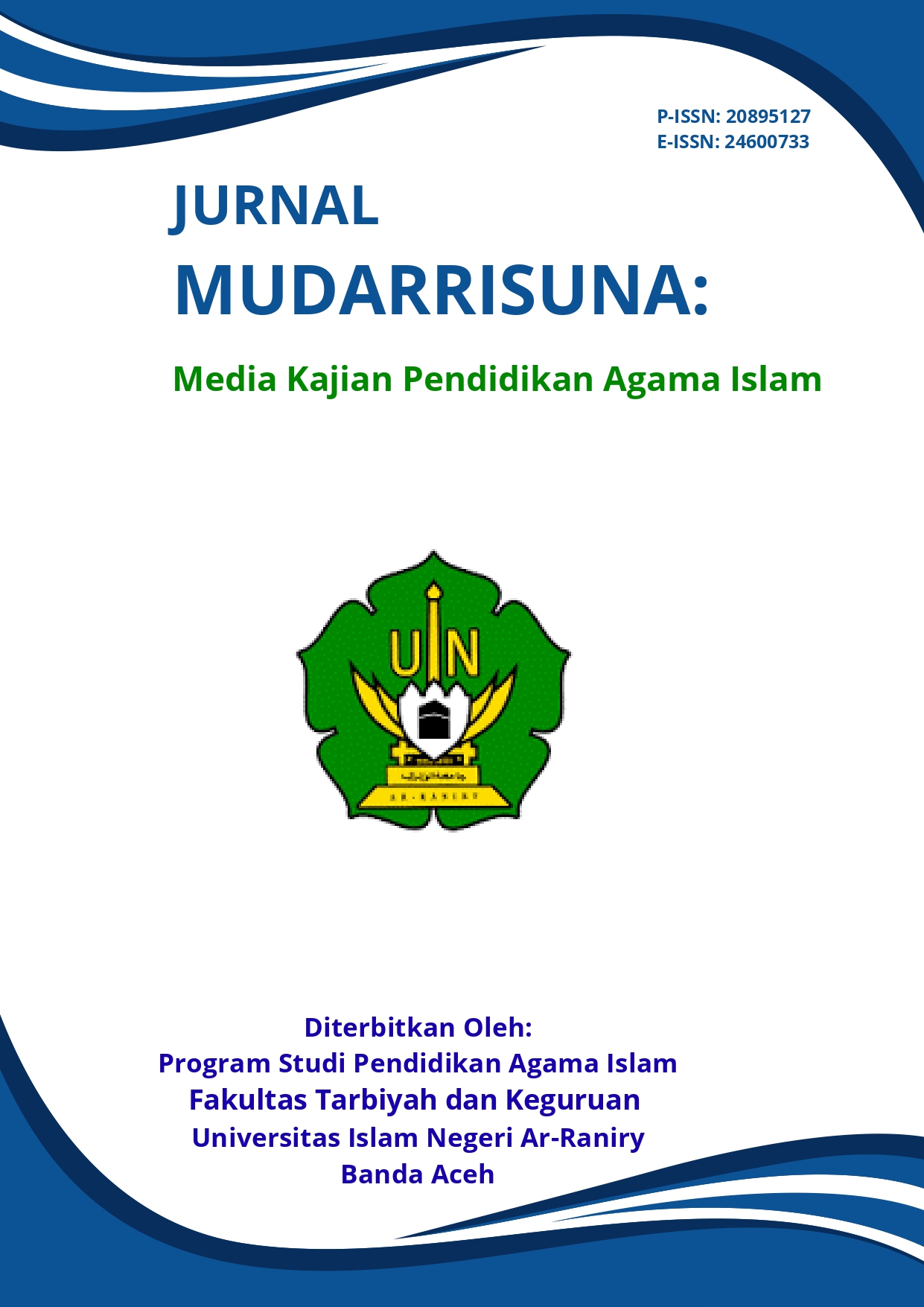Penggunaan Mixed Method pada Penelitian PAI
DOI:
https://doi.org/10.22373/jm.v14i4.25375Abstract
A good understanding of research methodology is key to generating quality knowledge, supporting informed decision-making and advancing areas of science and innovation. The use of Mixed Method in research has the advantage that it can support the process of achieving the research objectives that have been designed, of course the results are expected to be more accurate. Mixed Method in terms of time of course requires a long time in its implementation in order to really get maximum results. If previously discussed more about the gap between qualitative and quantitative, now switch to uniting / synergizing the two. The synergy of these two research approaches is then known as mixed method research. This synergy is expected to foster new power in conducting research. Research in the field of Islamic Education requires a lot of comprehensive studies so that Mixed Method can be used in conducting research on Islamic Education research topics. There are several PAI research topics that could have used the Mixed Method approach including Islamic Religious Teaching Methods, The Effect of Islamic Religious Education on Behavior and Attitudes, Learning the Quran and Hadith, Islam-Based Character Education, Islamic Religious Education in a Multicultural Context, The Role of Teachers in Islamic Religious Education, Islamic Religious Education Curriculum Development, Islamic Religious Education and Technology, Critical Analysis of Contemporary Issues in Islam. Some steps that can be taken in implementing Mixed Method are identifying research objectives, designing research studies, identifying variables, choosing qualitative and quantitative methods, developing research instruments, collecting data, analyzing data, interpreting results and communicating findings.References
Hamidah, S. (2015). Toleransi perguruan pencak silat Pagar Nusa, Kera Sakti dan PSHT. Universitas Islam Negeri Maulana Malik Ibrahim.
Harvard Catalyst. (2020). Getting Started With Mixed Methods Research. Catalyst Harvard Edu, 1–2. https://catalyst.harvard.edu/community-engagement/mmr/
Hermawan, I. (2019). Metodologi penelitian pendidikan kuantitatif, kualitatif dan mixed methode. Hidayatul Quran Kuningan.
Indrawan, D., & Jalilah, S. R. (2021). Metode Kombinasi/Campuran Bentuk Integrasi Dalam Penelitian. Jurnal Studi Guru Dan Pembelajaran, 4(3), 735–739. https://doi.org/10.30605/jsgp.4.3.2021.1452
Iskandar, R., Nehru, & Cicyn. (2021). Metode Penelitian Campuran: Konsep, Prosedur dan Contoh Penerapan. Nasya Expanding Mangement.
Johnson, R. B., & Onwuegbuzie, A. J. (2004). Mixed Methods Research: A Research Paradigm Whose Time Has Come. Educational Researcher, 33(7), 14–26. https://doi.org/10.3102/0013189X033007014
Khatibah. (2011). Penelitian Kepustakaan. Iqra’: Jurnal Perpustakaan Dan Informasi, 05(01), 36–39.
Kuswanti, H. (2016). Metode Penelitian Gabungan (Mixed Methods). https://www.dkampus.com/2016/03/metode-penelitian-gabungan-mixed-methods-dalam-penelitian/
Masrizal. (2011). Mixed Method Research. Kesehatan Masyarakat, 6(1), 53–56.
Pane, I., Hadju, V. A., Maghfuroh, L., Akbar, H., Simamora, R. S., Lestari, Z., Galih, A. P., Wijayanti, P. W., Waluyo, Uslan, & Aulia, U. (2022). Desain Penelitian Mixed Method. Yayasan Penerbit Muhammad Zaini.
Putra, F. P. . (2017). Mixed Methods: Pengantar dalam Penelitian Olahraga. Pembelajaran Olahraga, 3(1).
Ramdani, F. (2019). Kuriositas Metode ilmiah Penelitian teknologi informasi. UB Press.
Rasyid, F. (2015). Metodologi Penelitian Sosial Teori dan Praktek. STAIN Kediri Press.
Sari, M., & Asmendri. (2020). Penelitian Kepustakaan (Library Research) dalam Penelitian Pendidikan IPA. Natural Science, 6(1), 41–53. https://doi.org/10.15548/nsc.v6i1.1555
Sarwono, J. (2011). Mixed Methods Cara Menggabung Riset Kuantitatif dan Riset Kulitatif Secara Benar. Elex Media Komputindo.
Senjaya, A. J. (2018). Tinjauan Kritis Terhadap Istilah Metode Campuran (Mixed Method) dalam Riset Sosial. Risalah, Jurnal Pendidikan Dan Studi Islam, 4(1), 103–118. https://doi.org/10.5281/zenodo.3552026
Siregar, P. A., Asih, D. F., Husna, N., Hamdani, M. F., & Dipa, M. (2024). Dampak Kualitatif Kebijakan Moneter Terhadap Investasi Swasta: Penelitian Pustaka. Multidisiplin Inovatif, 8(3), 283–288.
Sugiyono. (2006). Metode Penelitian Kuantitatif, Kualitatif, dan R&D. Alfabeta.
Waruwu, M. (2023). Pendekatan Penelitian Pendidikan: Metode Penelitian Kualitatif, Metode Penelitian Kuantitatif dan Metode Penelitian Kombinasi (Mixed Method). Jurnal Pendidikan Tambusai , 7(1), 2896–2910.
Downloads
Published
Issue
Section
License
Copyright (c) 2024 Nurhidaya M, Dina Hermina, Nuril Huda

This work is licensed under a Creative Commons Attribution-ShareAlike 4.0 International License.
Jurnal MUDARRISUNA: Media Kajian Pendidikan Agama Islam allows the author(s) to hold the copyright and to retain the publishing rights without restrictions. Authors who publish in this journal agree to the following terms:
- Authors retain copyright and grant the journal right of first publication with the work simultaneously licensed under a Creative Commons Attribution-ShareAlike 4.0 International License that allows others to share the work with an acknowledgment of the work's authorship and initial publication in this journal.
- Authors are able to enter into separate, additional contractual arrangements for the non-exclusive distribution of the journal's published version of the work (e.g., post it to an institutional repository or publish it in a book), with an acknowledgment of its initial publication in this journal.
- Authors are permitted and encouraged to post their work online (e.g., in institutional repositories or on their website) prior to and during the submission process, as it can lead to productive exchanges, as well as earlier and greater citation of published work.




